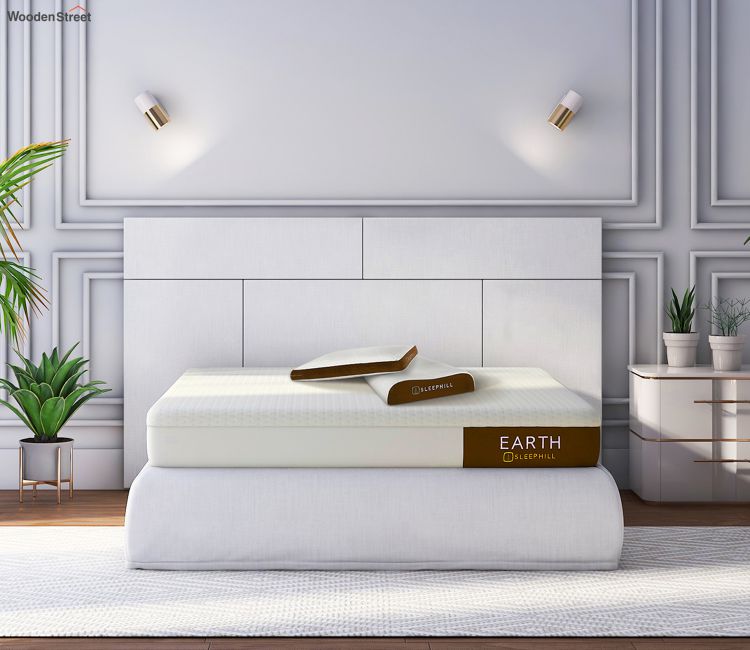Understanding Mattresses: A Comprehensive Guide

In the realm of home comfort, few elements are as crucial as the mattress. Beyond just a piece of furniture, a mattress plays a pivotal role in ensuring a good night’s sleep, impacting our overall health and well-being. This guide delves into the essential aspects of mattresses, exploring everything from size dimensions to longevity and beyond.
Size Dimensions of Mattresses
Mattresses come in various sizes, each catering to different needs and preferences:
- Single Bed Mattress:
- Dimensions: 38 inches wide by 75 inches long (96.5 cm by 190.5 cm).
- Ideal for children’s rooms, guest rooms, or small bedrooms where space is a concern.
- Twin XL (Extra Long) Size Mattress:
- Dimensions: 38 inches wide by 80 inches long (96.5 cm by 203 cm).
- Provides extra length, suitable for taller individuals or those who prefer more legroom.
- Full (Double) Size Mattress:
- Dimensions: 54 inches wide by 75 inches long (137 cm by 190.5 cm).
- Offers more width than a twin, accommodating single sleepers who desire more space.
- Queen Size Mattress:
- Dimensions: 60 inches wide by 80 inches long (152.5 cm by 203 cm).
- One of the most popular sizes, providing ample space for couples or individuals who prefer extra room.
- King Size Mattress:
- Dimensions: 76 inches wide by 80 inches long (193 cm by 203 cm).
- Offers the maximum sleeping space, ideal for couples or families who enjoy spacious sleeping arrangements.
Age and Lifespan of Mattresses
Understanding the lifespan of a mattress is essential for ensuring optimal comfort and support over time:
- Average Lifespan: A quality mattress typically lasts between 7 to 10 years with proper care and maintenance.
- Factors Affecting Lifespan: The durability of a mattress can vary based on factors such as:
- Materials: High-quality materials like memory foam or latex tend to last longer than traditional innerspring mattresses.
- Usage: Regular use and weight distribution affect how quickly a mattress wears out.
- Maintenance: Proper cleaning and rotation can prolong its lifespan.
Choosing the Right Mattress
Selecting the right mattress involves considering several key factors:
- Sleeping Position: Different mattresses cater to various sleeping positions (side, back, stomach), ensuring proper spinal alignment and comfort.
- Firmness Levels: Mattresses range from extra firm to plush, accommodating personal preferences and health needs.
- Material Composition: Options include memory foam, latex, innerspring, hybrid, and airbeds, each offering unique benefits in terms of support and comfort.
Additional Considerations
Mattress Types
- Memory Foam Mattresses:
- Known for contouring to the body’s shape, providing excellent pressure relief and motion isolation.
- Ideal for those with joint pain or who prefer a mattress that molds to their body.
- Innerspring Mattresses:
- Constructed with steel coils for support and often topped with layers of foam or fiber for comfort.
- Offer good airflow, making them suitable for those who tend to sleep hot.
- Latex Mattresses:
- Made from natural or synthetic latex, known for their durability and responsiveness.
- Provide a balanced feel of support and comfort, with natural resistance to allergens and dust mites.
- Hybrid Mattresses:
- Combine elements of memory foam, latex, and innerspring to offer a blend of support and comfort.
- Ideal for sleepers who want the benefits of multiple materials in one mattress.
Health Benefits
- Spinal Alignment: A supportive mattress can help maintain proper spinal alignment, reducing back and neck pain.
- Allergy Control: Mattresses made from hypoallergenic materials like latex or treated fabrics can minimize allergens.
- Improved Sleep Quality: A comfortable mattress promotes deeper, more restorative sleep, enhancing overall well-being.
Health Benefits
- Spinal Alignment: A supportive mattress can help maintain proper spinal alignment, reducing back and neck pain.
- Allergy Control: Mattresses made from hypoallergenic materials like latex or treated fabrics can minimize allergens.
- Improved Sleep Quality: A comfortable mattress promotes deeper, more restorative sleep, enhancing overall well-being.
Sustainability and Eco-Friendly Options
In recent years, there has been a growing demand for mattresses that are environmentally sustainable and eco-friendly:
- Natural Materials: Mattresses made from organic cotton, natural latex, or sustainably sourced materials appeal to environmentally conscious consumers.
- Certifications: Look for certifications like CertiPUR-US® for foam mattresses or Global Organic Textile Standard (GOTS) for organic materials, ensuring products meet stringent environmental and health standards.
Conclusion
In conclusion, mattresses are not just pieces of furniture but integral components of our sleep and overall health. Understanding the size dimensions, age considerations, types, and health benefits associated with different mattresses can empower consumers to make informed decisions when selecting a mattress. Whether it’s ensuring adequate space, choosing the right firmness level, or considering health-related benefits, investing in a quality mattress tailored to individual needs is crucial for a restful night’s sleep.







